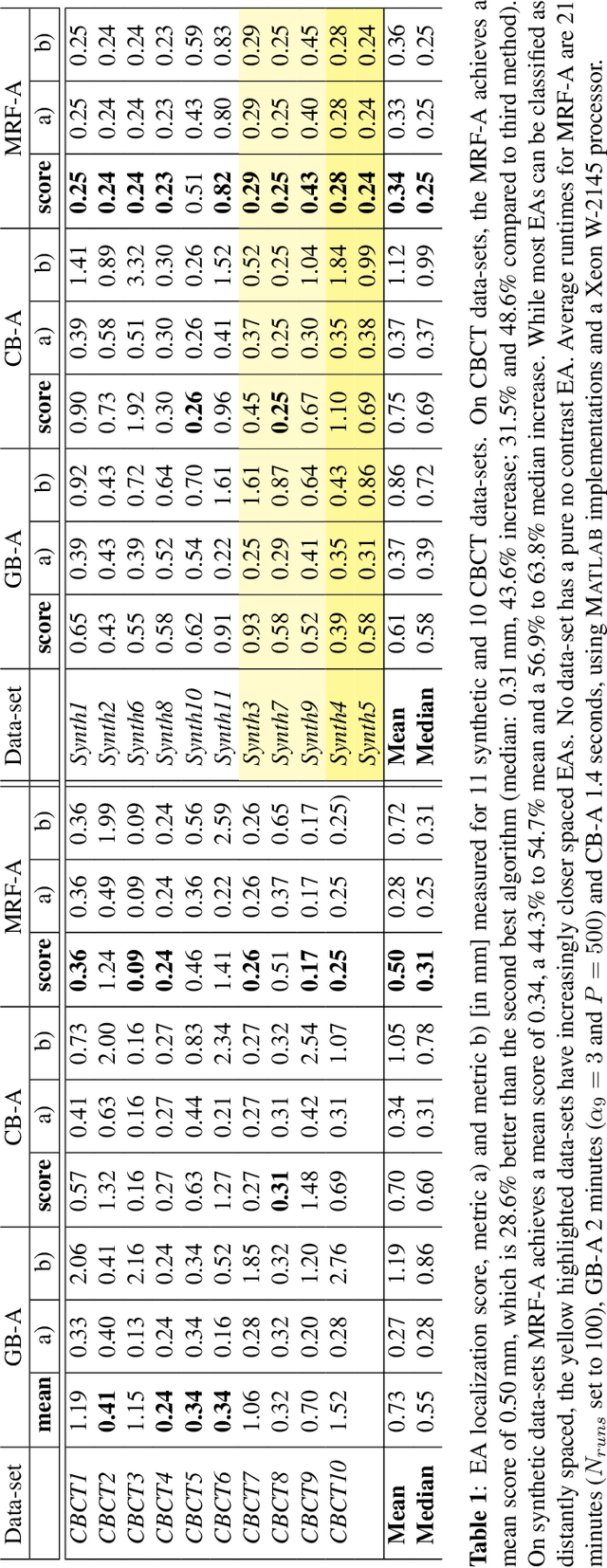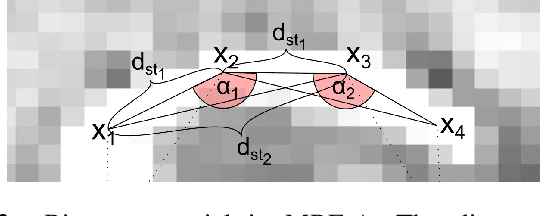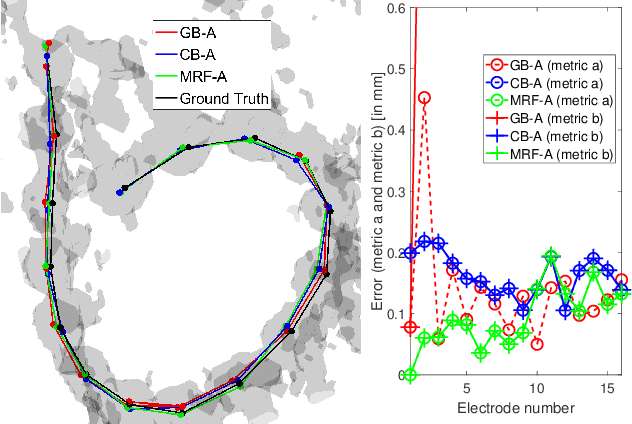Hendrik Hachmann
Human Spine Motion Capture using Perforated Kinesiology Tape
Jun 05, 2023



Abstract:In this work, we present a marker-based multi-view spine tracking method that is specifically adjusted to the requirements for movements in sports. A maximal focus is on the accurate detection of markers and fast usage of the system. For this task, we take advantage of the prior knowledge of the arrangement of dots in perforated kinesiology tape. We detect the tape and its dots using a Mask R-CNN and a blob detector. Here, we can focus on detection only while skipping any image-based feature encoding or matching. We conduct a reasoning in 3D by a linear program and Markov random fields, in which the structure of the kinesiology tape is modeled and the shape of the spine is optimized. In comparison to state-of-the-art systems, we demonstrate that our system achieves high precision and marker density, is robust against occlusions, and capable of capturing fast movements.
Color-aware Deep Temporal Backdrop Duplex Matting System
Jun 05, 2023Abstract:Deep learning-based alpha matting showed tremendous improvements in recent years, yet, feature film production studios still rely on classical chroma keying including costly post-production steps. This perceived discrepancy can be explained by some missing links necessary for production which are currently not adequately addressed in the alpha matting community, in particular foreground color estimation or color spill compensation. We propose a neural network-based temporal multi-backdrop production system that combines beneficial features from chroma keying and alpha matting. Given two consecutive frames with different background colors, our one-encoder-dual-decoder network predicts foreground colors and alpha values using a patch-based overlap-blend approach. The system is able to handle imprecise backdrops, dynamic cameras, and dynamic foregrounds and has no restrictions on foreground colors. We compare our method to state-of-the-art algorithms using benchmark datasets and a video sequence captured by a demonstrator setup. We verify that a dual backdrop input is superior to the usually applied trimap-based approach. In addition, the proposed studio set is actor friendly, and produces high-quality, temporal consistent alpha and color estimations that include a superior color spill compensation.
Localization of Cochlear Implant Electrodes from Cone Beam Computed Tomography using Particle Belief Propagation
Mar 18, 2021



Abstract:Cochlear implants (CIs) are implantable medical devices that can restore the hearing sense of people suffering from profound hearing loss. The CI uses a set of electrode contacts placed inside the cochlea to stimulate the auditory nerve with current pulses. The exact location of these electrodes may be an important parameter to improve and predict the performance with these devices. Currently the methods used in clinics to characterize the geometry of the cochlea as well as to estimate the electrode positions are manual, error-prone and time consuming. We propose a Markov random field (MRF) model for CI electrode localization for cone beam computed tomography (CBCT) data-sets. Intensity and shape of electrodes are included as prior knowledge as well as distance and angles between contacts. MRF inference is based on slice sampling particle belief propagation and guided by several heuristics. A stochastic search finds the best maximum a posteriori estimation among sampled MRF realizations. We evaluate our algorithm on synthetic and real CBCT data-sets and compare its performance with two state of the art algorithms. An increase of localization precision up to 31.5% (mean), or 48.6% (median) respectively, on real CBCT data-sets is shown.
 Add to Chrome
Add to Chrome Add to Firefox
Add to Firefox Add to Edge
Add to Edge